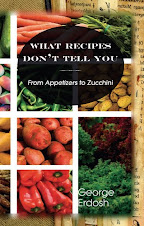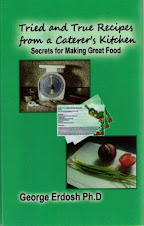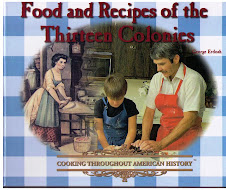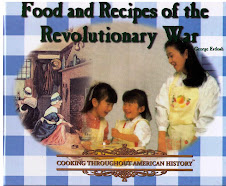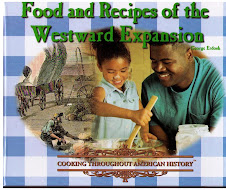Cilantro

Saturday, January 18, 2014
HOME-MADE PASTA?
An old woman with a wooden bowl wide as a kettle
drum, equally large sieve and a number of smaller equipment arrived to our
house every fall to prepare a variety of pasta for the year. She stayed a full
day in the basement and by the end of the day a dozen different kinds of pasta
were drying on many sheets spread out throughout our house. The next day they
were all ready for storage. Today few would consider preparing pasta such as
orzo, egg noodles or lasagna by hand. Not only it’s hard work but it takes serious
experience.
Even if you own a pasta machine, homemade pasta
turns out acceptable only if you use it regularly and learn the technique.
Pasta dough has a way of refusing to obey you to be coaxed into pasta shapes. I
watched an experienced chef preparing pasta for the menu scheduled for that day,
and it took him hours. First he prepared the dough and hand kneaded it
thoroughly. After a period of resting to let the gluten relax, he passed the
dough through his pasta machine several times, using a large opening. Then he
folded a third of the long ends of the rectangular dough over and one more time
over the last third. Now he had three thirds folded into one.
He reduced the pasta machine opening and passed
the dough through several more times. He repeated this process again and again,
eventually having the thinnest opening in the machine producing a pasta thin as
corn tortillas. But this is not the pasta yet. He let this sheet covered with a
moist towel to dry for a few hours then using a chef knife, cut it into long
thin strands of pasta, now ready to cook. How long the drying process is where years
of experience come in.
Pasta dough is simple: flour and water, no salt.
Fresh or dehydrated yolks or whole eggs for egg pasta.
This is not for every home cook. It’s long,
tedious and the results are questionable (I know from experience).
You can also buy the perishable fresh pasta at the
market. Is it better than inexpensive dry pasta? In my experience, it is not.
In my kitchen it’s the dry pasta that reigns, and
I always have some dozen varieties in the pantry. For a good pasta, should you
buy the more costly Italian imports? In Italy they cannot grow the hard winter
durum wheat essential for good pasta. Instead they import the best durum wheat
from the winter crop in North Dakota, Minnesota, Montana and adjacent Canadian
provinces. After packaging in Italy and shipping, you find the expensive
Italian pasta on the store shelves. Any good brand of domestic pasta, made from
the same wheat, is your best choice.
Read the label to make sure the pasta was made from durum
wheat—that’s all you need for good pasta. Two more names you are likely to come
across reading the ingredient lists on pasta packages: semolina flour and
farina flour. The best pasta are made from semolina flour which is the inside
part of the durum wheat grain, milled slightly coarse, slightly gritty,
resembling a fine cornmeal. Farina flour is a similar slightly gritty flour but
milled from hard wheat (bread flour), not durum wheat. Good-quality shaped
short pasta (like macaroni or alphabet soup pasta) is made from semolina. In
long pasta products they may mix semolina and farina flours and you’ll still
get a good product.
Unless you use your pasta machine often and gain
experience, stick with good domestic pasta for a good pasta dish. Don’t
overcook and don’t undercook: just to perfect el dente.
Sunday, January 5, 2014
Simple Potato Curry
I used to live in Sri Lanka for two years and, naturally, I got totally enamored with their curries. There are many different styles of curries varying from region to region throughout Asia, and varying with the locally available ingredients. In the hotter climates it's coconut milk and hot spices are the norm but in the cooler north, the spices are milder and coconut is no longer available at the markets.Ceylon curries are almost like South Indian curries (the two areas are separated by a short distance), liquidy, spicy and with the inevitable coconut milk.
Cooking a real, authentic curry is a time-consuming kitchen chore. In fact, no one in Sri Lanka serves just one curry dish; rather several curries and often a sambol or chutney surround the steamed rice along with some fried bready accompaniment such.
Yet we can make a simple curry as a side dish that won't tax your kitchen chores. This potato curry goes with just about any main dish, whether curried or not. And you can assemble the ingredients and cook them within half hour.
Cooking a real, authentic curry is a time-consuming kitchen chore. In fact, no one in Sri Lanka serves just one curry dish; rather several curries and often a sambol or chutney surround the steamed rice along with some fried bready accompaniment such.
Yet we can make a simple curry as a side dish that won't tax your kitchen chores. This potato curry goes with just about any main dish, whether curried or not. And you can assemble the ingredients and cook them within half hour.
Simple Potato Curry
Use only fresh spices. I always use whole seeds that I freshly grind for the best flavor.
1 tsp curry powder
1 lb russet potatoes, peeled and cut into small cubes
1 medium (5 oz) yellow onion, thinly sliced
1 fresh hot chili (jalapeno), thinly sliced
1/2 cup coconut milk
1/4 tsp ground hot chili
1 tsp ground cumin
1/4 tsp dill seeds
1 bay leaf
1 tsp salt
Over brisk heat roast curry powder for a few seconds in a medium pot, then quickly add potatoes, onion and jalapeno slices, coconut milk and the remaining spices and salt. Turn heat to low simmer, cover pot and cook for 20 minutes. Adjust liquid if necessary.
Serves four.
Saturday, January 4, 2014
Bake Fruitcakes in the Spring
Why would anyone talk about fruitcakes in the winter?
Those you received during the recent holiday season have already been re-gifted
or are being employed as a doorstop, both of which are the standard use for such
gifts. Yes, fruitcakes have a bad rep, but not mine. Recipients claim that it
takes great willpower to restrict their eating pleasure to one slice at a time.
Most fruitcake bakers start thinking about making
fruitcakes for gifts around October, even later. Yet fruitcakes, like good
wines and ripe cheeses, need to mature for many months with occasional brandy
spritzing for moisture and flavor. I begin preparing fruitcakes in early spring
to be ready by the end of the year. After baking I wrap each loaf separately in
clean, soft, brandy-soaked cloths then seal in foil or plastic wrap. I mark my
calendar to open the packages every second month and give each another light
sprinkling of liquor.
By December they look and smell heavenly. Should
they be used for re-gifting, the lucky recipient will be blessed. Doorstops?
Very unlikely.
Traditional recipes call for candied fruits that
are hard to find until just before the holidays. They are expensive and not
particularly good. This tradition dates back to times when other kinds of dried
fruits were not readily available. Today we have a huge selection of
good-tasting dehydrated fruits; your fruitcake will be better using them
instead of candied fruits.
Use only top-quality, fresh nuts.
And remember, fruitcakes are no more difficult to
bake than banana bread—and who can’t bake a banana bread?
Heavenly Fruitcakes
Fruit mixture
2½ cups (12 oz) dried fruit mix (or glacéd fruits)
1¾ cups (8 oz) combination of dark raisin and
currants
1 cup (4 oz) dates, chopped
1¼ cups (4 oz) pecan halves
grated zest of 1 lemon
¼
cup brandy
Batter
¼
cup cornmeal
1½
cup flour
½
tsp baking powder
¼
tsp cinnamon
½
tsp salt
dash of grated nutmeg
1 stick (4 oz) butter, softened
¾ cup (4 oz) brown sugar
3 Tbsp molasses
2 large eggs
brandy for soaking
Combine fruit mix, raisins, currants, dates and
lemon zest with brandy, mix well and let stand covered overnight.
Combine cornmeal, flour, baking powder, cinnamon,
salt and nutmeg. Cream butter and brown sugar with a mixer until fluffy, about
five minutes. Add molasses, then eggs one at a time while continuing to mix,
then add dry ingredients. Stir in fruit mixture, including soaking brandy.
Prepare a standard loaf pan by lining with foil or
parchment paper for easy removal. Lightly coat lining with cooking spray. Spoon
batter into the loaf pan and spread evenly. Set pan in a container of boiling
water that comes 2 inches up on sides of loaf pan.
Bake in preheated 300⁰F oven for about 70 minutes or until cake
tester comes out clean. Remove from water bath and cool on a wire rack, then
unmold from the pan peeling off foil or parchment.
Wrap loaf in brandy-soaked cotton toweling (using about
⅓ cup brandy). Store for at least six month, adding more brandy every other
month to keep cotton moist.
This recipe makes one loaf and it’s easy to multiply
it to bake several loaves at a time. Or you can bake many mini loaves like the
one you see in the photo.
Subscribe to:
Posts (Atom)





 Stumble It!
Stumble It!